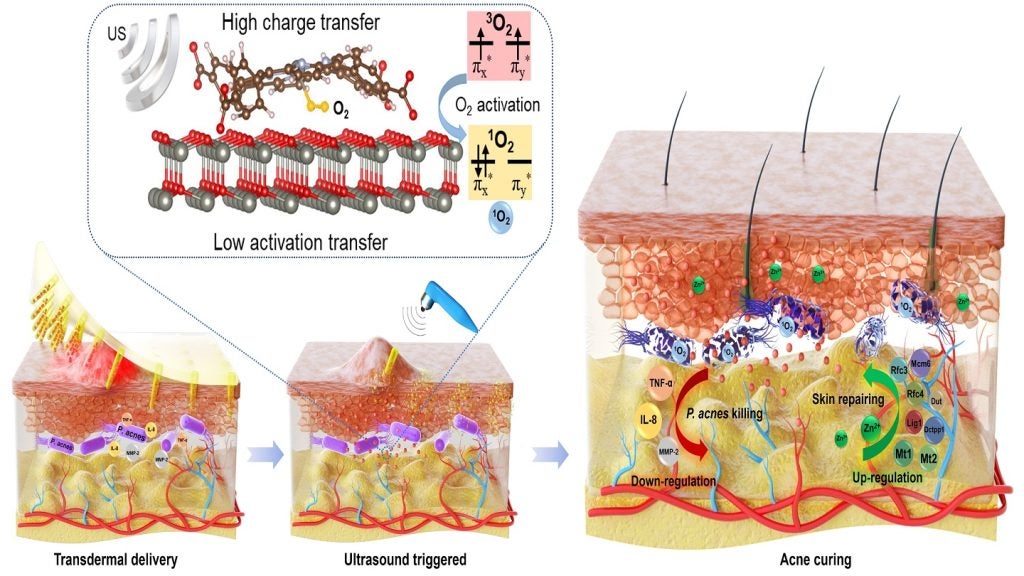Researchers from the University of Hong Kong (HKUMed) have designed a new microneedle patch for the treatment of skin infections.
The research study was headed by HKUMed’s Department of Orthopaedics and Traumatology, School of Clinical Medicine professor Kelvin Yeung Wai-Kwok.
The microneedle’s design, developed with ultrasound-responsive zinc-based metal-organic framework (MOF) antibacterial nanoparticles, ensures delivery without any pain to treat the infection on skin tissue while simultaneously facilitating skin repair.
It enables the transdermal delivery of antibacterial nanoparticles for treating the infection caused by propionibacterium acnes (P. acnes) bacteria at a minimally invasive approach.
The new microneedle has a diameter of roughly 50µ, resembling typical hair.
The current design involves introducing antibacterial nanomaterials to the microneedle patch, which rapidly responds to bacterial infection.
The modified nanoparticles, which include ZnTCPP and ZnO, can generate a significant amount of reactive oxygen species (ROS). This is subject to ultrasound stimulation which can effectively oxidise the bacteria’s crucial cellular macromolecules.
According to researchers, the results show that destroying P. acnes bacteria mediated by ROS can reach 99.73% after 15 minutes of ultrasound stimulation.
Wai-Kwok said: “The new microneedle patch enabling ROS generation upon ultrasound stimulation, regarding as a non-antibiotic and transdermal approach, can not only effectively address the infection induced by P. acnes bacteria, but also facilitates the skin repair due to zinc ion release.
“Due to the specific killing mechanism of ROS, we believe that this design is also able to address the other skin infections induced by fungi, parasites or viruses, such as tinea pedis (namely “Athlete’s Foot” or “Hong Kong Foot” in slang).”









